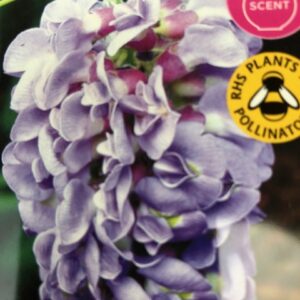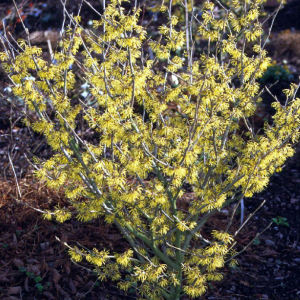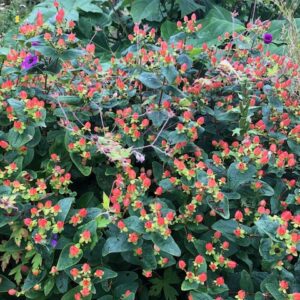Jasminum nudiflorum
Winter Jasmine
Jasminum nudiflorum is a slender shrub with green arching stems which gives an evergreen appearance.
Clusters of fragrant, bright yellow flowers produced before the leaves in winter and early spring. Flowers November to March.
Max Height 3m. Max Spread 3m. Sun/Part shade. Hardy
MORE
Jasminum nudiflorum, commonly known as winter jasmine, is a species of flowering plant in the olive family, Oleaceae. This deciduous shrub is native to China and is widely cultivated as an ornamental plant in many parts of the world for its bright yellow flowers that bloom during the winter months.
The plant has long, arching stems that can reach a height of 3 meters, and it spreads widely to form a dense thicket. The stems are green and smooth, and they bear small, green leaves that are trifoliate, meaning they consist of three leaflets. The leaves are shiny and oval-shaped, with a pointed tip and a smooth edge. They turn yellow in Autumn before dropping off, leaving the stems bare for the winter.
The most striking feature of the winter jasmine is its bright yellow flowers, which appear in clusters along the stems in late winter or early spring. The flowers are small, only about 1 cm in diameter, but they are numerous, giving the plant a stunning display of color. Each flower has five petals that are slightly curled back, exposing the central yellow stamens. The flowers are mildly fragrant, with a sweet scent that is most noticeable in the morning when they first open.
Winter jasmine is a hardy plant that can tolerate a wide range of growing conditions. It prefers full sun to partial shade and well-drained soil that is moist but not waterlogged. It can grow in acidic, neutral, or alkaline soil and can even thrive in poor soil conditions. It is drought-tolerant once established and can withstand temperatures as low as -15°C, making it an ideal plant for cold climates.
This plant is often used in landscaping to provide winter interest when other plants are dormant. It is commonly used as a ground cover, a hedge, or a specimen plant. Its arching stems can be trained to grow over walls or along trellises, creating a dramatic effect. It is also a popular plant for bonsai enthusiasts, who appreciate its graceful form and delicate flowers.
Winter jasmine is easy to propagate from cuttings, and it can be pruned to maintain its shape and size. Pruning should be done after the plant has finished flowering, as it blooms on old wood. It can be cut back hard if necessary, but this may reduce the amount of flowering in the following year.
In traditional Chinese medicine, the root and stem of winter jasmine are used to treat a variety of ailments, including fever, coughs, and joint pain. It is also used as an ingredient in cosmetics and perfumes.
Despite its many desirable qualities, winter jasmine is not without its drawbacks, as it can smother other plants, and it can also be prone to pests and diseases, such as aphids, spider mites, and powdery mildew.
Overall, Jasminum nudiflorum is a beautiful and versatile plant that can add color and interest to a garden during the winter months. Its bright yellow flowers and graceful form make it a popular choice for landscapers and gardeners alike. With proper care and maintenance, it can thrive in a variety of growing conditions and provide enjoyment for years to come.






Reviews
There are no reviews yet.